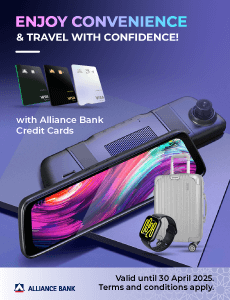Expert’s Guide To e-Invoice Implementation In Malaysia

Table of Contents
A while  back, iMoney hosted its fourth episode of the Wealth, Wisdom and Whatever podcast. This particular episode covered Malaysia’s implementation of e-invoicing and featured Chai Fung Ying, an accounting expert from YYC Group.
back, iMoney hosted its fourth episode of the Wealth, Wisdom and Whatever podcast. This particular episode covered Malaysia’s implementation of e-invoicing and featured Chai Fung Ying, an accounting expert from YYC Group.
Fung Ying has eight years’ experience as a chartered accountant and shared her expert tips on the basics of LHDN e-invoice.
She shared her knowledge with iMoney’s followers by answering the top frequently asked questions about e-invoice implementation in Malaysia.
What exactly is e-invoicing?
For those not in the know, e-invoicing is a requirement by the government that all companies must issue their invoices in a digital format starting from 2025.
Timeline for e-invoicing in Malaysia
It is intended to be rolled out in phases, with the first phase starting in August 2024. This first phase is for those who have an annual sales value of more than RM100 million in 2022.
The second phase kicks off on 1 of January 2025. This is the implementation date for those taxpayers who have more than RM25 million and up to RM100 million of sales value in 2022. Phase 3 will begin on 1 July 2025 and is the most important one. This phase will include all taxpayers undertaking commercial activities who earn RM25 million. From hawker stall owners to freelancers, all will be subject to e-invoicing when conducting business.
Grace period for e-invoice in Malaysia
For the first phase, the government had announced a six-month transitional grace period starting August 1, 2024. During the grace period, consolidated e-Invoices are allowed.
There will be no prosecution under Section 120 of the Income Tax Act 1967 for non-compliance with the e-Invoicing rules during this period.
Why is e-invoicing being implemented?
Fung Ying explains that the Inland Revenue Board (IRB) wishes to implement e-invoicing to keep tabs on all transactions that might otherwise slip under their radar and standardise income reporting.
This makes sense as there are plenty of transactions in Malaysia that go unrecorded. Fung Ying provides the example of roadside hawkers who sell nasi lemak or other local delicacies. More often than not, no receipt or invoice is given for these purchases, leaving no paper trail.
Freelancers also face similar issues as some of them will receive a task from clients, agree on a payable amount for the job, and just get to work without drafting a formal invoice. Through the use of a mobile app, the IRB intends to get businesses to properly prove the source of their income.
As mentioned previously, e-invoicing is for those conducting businesses, so those who are just receiving a salary, rental income, or dividend income will not be required to file an e-invoice.
What if I already have an e-invoice system
For businesses that already have a self-built e-invoice system, no worries. According to Fung Ying, there are two methods for handling e-invoicing. The first is through the IRB’s MyInvois portal, which is completely free for taxpayers and comes at no additional cost. The other option is for those with their own ERP system, accounting software, and POS system.
Businesses that want to use an API application programming interface to connect with the MyInvois system that is hosted by the IRB can use the API method to directly transmit the invoice from their own system to the IRB system. This method will be very convenient for larger companies who already have their own systems in place.
How to issue an e-invoice
Whether you are using the MyInvois portal or your own API to issue e-invoices, the procedure for both are somewhat similar. Fung Ying explains that once the e-invoice system is implemented, businesses will not be sending invoices directly to the client any longer.
Instead, a seller will first need to issue the e-invoice to the IRB for validation when they sell something. According to the guidelines, the validation process should only take about two seconds.
Once the seller receives the validated e-invoice, they need to check three things. The first thing they need to check is the unique identifier number that is assigned by the IRB. Second, they need to check the date and time for validation.
Finally, they need to check the validation link that is embedded in the QR code. Once the e-invoice is validated, the IRB will send a notification to both the seller and the buyer. Once the supplier receives the validated e-invoice, they must share the validated e-invoice with the buyer.
What if your internet is down?
According to Fung Ying, the IRB does not enforce a hard deadline for the issuing of e-invoices and it does not have to be immediate. As long as you are able to reconnect to the internet, you can issue the e-invoice. In terms of B2C, customers do not actually need to validate. They simply need to check to see if it is correct.
The cancellation must be requested within 72 hours, since e-invoices are automatically accepted after 72 hours of inaction.
The LHDN e-Invoice site also provides detailed FAQs for businesses who need to deep dive into the details of e-Invoice like:
- Details of Supplier and Buyer
- Issuance of e-Invoices
- Validation of e-Invoices
- Sharing of e-Invoices
- Adjustments to e-Invoices
This covers the basics of the new e-invoice system that is being implemented by the IRB. If you would like to listen to the full podcast with Fung Ying, just click below.









